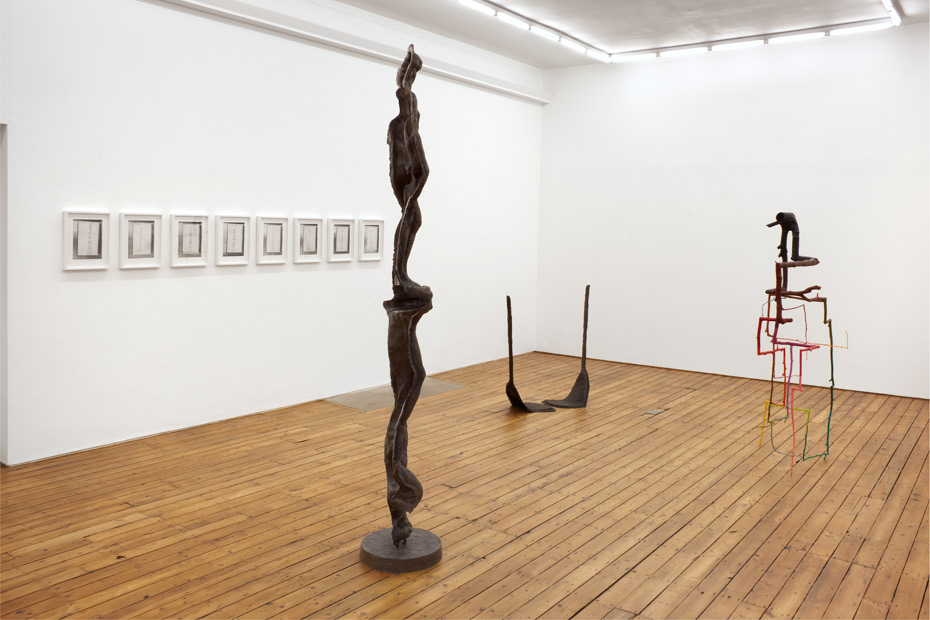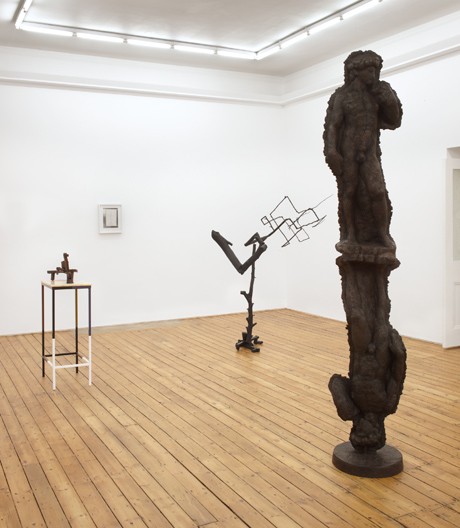
The new show at The Approach gallery explores the debate over process vs finish product
Is getting there really half the fun? Its a question that has frequently — mockingly — passed through my brain at various borders and passport controls over the years as people asked me questions like what my guitar was “for”, or when, stranded between Buffalo, New York and nowhere on the overnight train from Chicago, I was subjected to a particularly thorough round of questioning by the good folks at America’s Immigration Customs and Enforcement. But not all journeys are so reductively temporal, and the border patrol at the boundaries of the conceptual are much friendlier, I’m told. All this is apropos of the new show by Evan Holloway at the Approach Gallery, titled Post-process plunk.
Holloway’s title is directly engaging one of the (minor) major cycles of revolution and reaction in recent aesthetic practise, the tendency of various great-and-good city planners to seek out art works to decorate public institutions and post-modernist business utopias in “revitalised” urban districts vs. the “process art” movement which focusses on the act of creating a given art work relative to the finished product.
Holloway’s conceptual gambit is timely, as the Olympian renovations of East London are settling into their aesthetic afterlives, it’s opportune to ask, “What becomes of the original creative logic behind their construction now that their use-value is migrating?” More parochially, I can tell you Holloway’s questions about the “process art” movement — and, incidentally, lots of the academical blather that surrounds it — strikes an equally well-timed chord. You see a lot of shows as an art critic, and you get the feeling that process has so trumped the final object that sooner than later every person who accidentally left the record button running on their smartphone on a long night out will be given gallery space so that audiences can reflect on their “documentation” of contemporary social mores in relation to the performance of passing out headfirst in a bin in Shoreditch.

Beyond the social considerations and in-house art discussions, it’s a relief — no pun intended — to say Holloway’s sculptures are much lighter than the debates they address. I find I’m mentally wandering back to two works in particular, Balancing Tree and Inverted Tree #2. The works, as might be expected, take trees as their starting points, integrating cast branches, but quickly move beyond organicism. Balancing Tree‘s precariousness is anything but organic, the forms are so out of balance as to nearly remind one of the ecosystem itself. With Inverted Tree #2 a series of right angles turn branches and twigs into a cage-like structure which nudges a kind post-human digitalism foregrounding both the materials used and their transformation.
Double David is another work that repays serious attention. In the piece a garden statue in the shape of Michelangelo’s David is cast in bronze twice so that one David is upright and the other is inverted. The negative space of the counter-relief is visible as well, so that the work moves in between figuration and abstraction in an interesting way. The positioning of the Davids above one another also evokes the idea of the reflective surface imbuing the work with a symbolic richness as well, David as Narcissus. Nothing like a bit of mixed mythology to keep the chill of autumn at a distance.
Post-Process Punk runs until 11 November at The Approach, 1st Floor, 47 Approach Road, E2 9LY




